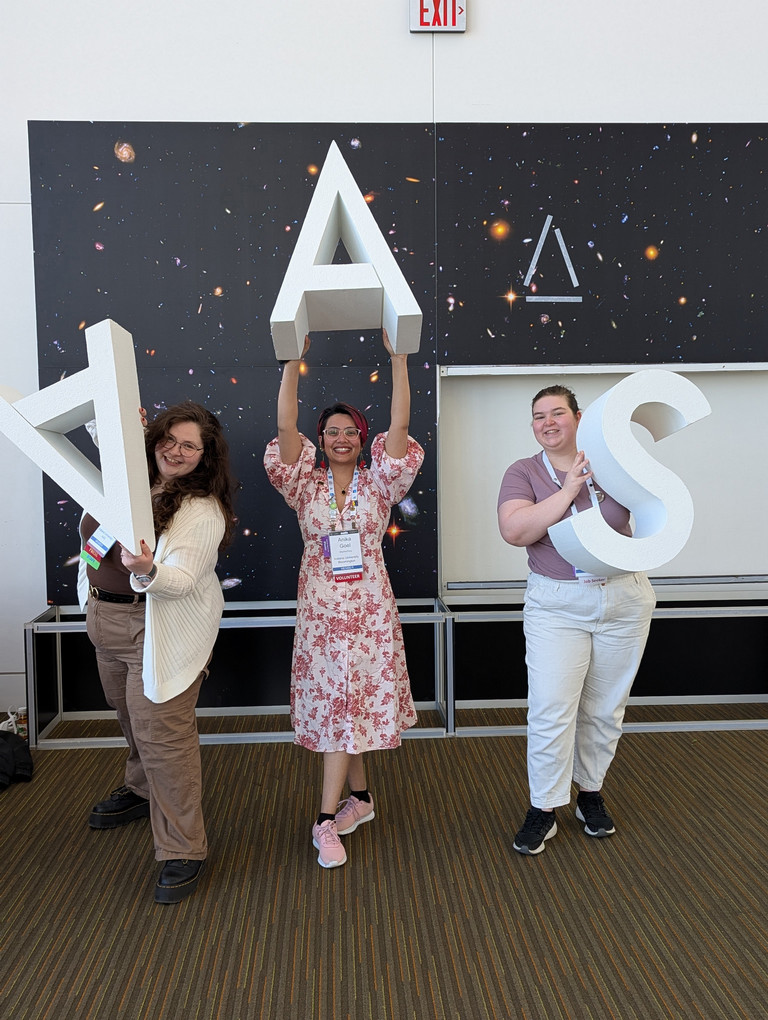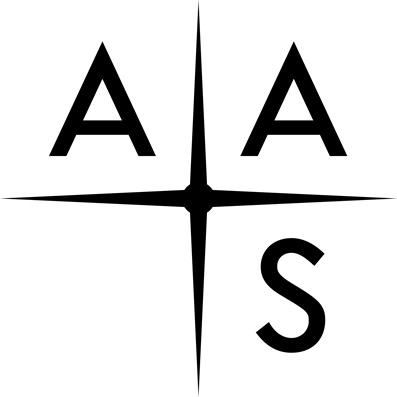IU Astronomers in Alaska!
IU Astronomy was well represented at the 246th meeting of the American Astronomers in Anchorage, Alaska, June 8-12, 2025.
IU graduate student Emma Dugan reported on her analysis of TOI-1135 using the Rossiter-McLaughlin effect, in collaboration with Xian-Yu Wang, Songhu Wang, and Malena Rice. The star is orbited by a "sub-Saturn" and is the hottest star to date with such measurements. Emma determined the tilt of its orbit compared to the host star's equator and found the orbit to be misaligned. Unlike hot Jupiters, whose orbits around cooler host stars are aligned but mis-aligned around hotter stars, sub-Saturns' orbits appear to be mis-aligned around host stars of all temperatures. Sub-Saturns appear lie preferentially in polar orbits. Emma's work was presented both in the scientific sessions and in a press conference.
Graduate student Kristin Baker described her work on Green Pea galaxies from the "Star Formation Across Cosmic Time" (SFACT) survey, in collaboration with John Salzer. Green Pea galaxies were first discovered from their unusual green appearance in SDSS gri three-color images. She presented a new sample of Green Pea candidates in the redshift range z = 0.31 – 0.51. The depth of the SFACT survey on the 3.5-m WIYN telescope allowed Kristin to identify Green Pea candidates to higher redshifts and lower luminosities than previous studies.
Graduate student Anika Goel, working with Samir Salim, discussed the difficulty of identifying obscured active galactic nuclei (AGN) using infrared colors from the WISE mission. They studied a sample of 361,328 SDSS galaxies up to z< 0.3 and found that roughly 80% of the Seyfert 2 population is missed using the WISE W1-W2 > 0.5 color cut, and as many as 30% of IR-selected objects are not AGN. Their findings highlight the need for caution when using WISE colors to select AGN.
Caty Pilachowski reported on work with Gloria Koenigsberger and others to reconcile the abundances of lithium in the double-line, eclipsing binary V505 Per. They suggest that using hotter temperatures than previously reported places the stars on the hot side of the lithium dip and resolves the discrepancy.
Graduate student Lexi Gault also participated in the meeting through her role as an AAS Media Fellow. Media Fellowships provide training and experience in science communication. Fellows can build up a writing portfolio, learn about career opportunities and network within the science communication community. Lexi's AAS Nova posts are available here: https://nam12.safelinks.protection.outlook.com/?url=https%3A%2F%2Faasnova.org%2Fauthor%2Flexi%2F&data=05%7C02%7Chlezotte%40iu.edu%7Cebfc52290a86477d943e08ddd3aa895c%7C1113be34aed14d00ab4bcdd02510be91%7C1%7C0%7C638899451631055658%7CUnknown%7CTWFpbGZsb3d8eyJFbXB0eU1hcGkiOnRydWUsIlYiOiIwLjAuMDAwMCIsIlAiOiJXaW4zMiIsIkFOIjoiTWFpbCIsIldUIjoyfQ%3D%3D%7C0%7C%7C%7C&sdata=WCwUzn2ZxqTaGy0rNTdO3oxGMVcNY7Ek1zwwHDr%2B6no%3D&reserved=0.

Emma Dugan Presenting at AAS

Lexi Gault, Anika Goel and Kristin Baker at AAS 2025


 The College of Arts
The College of Arts